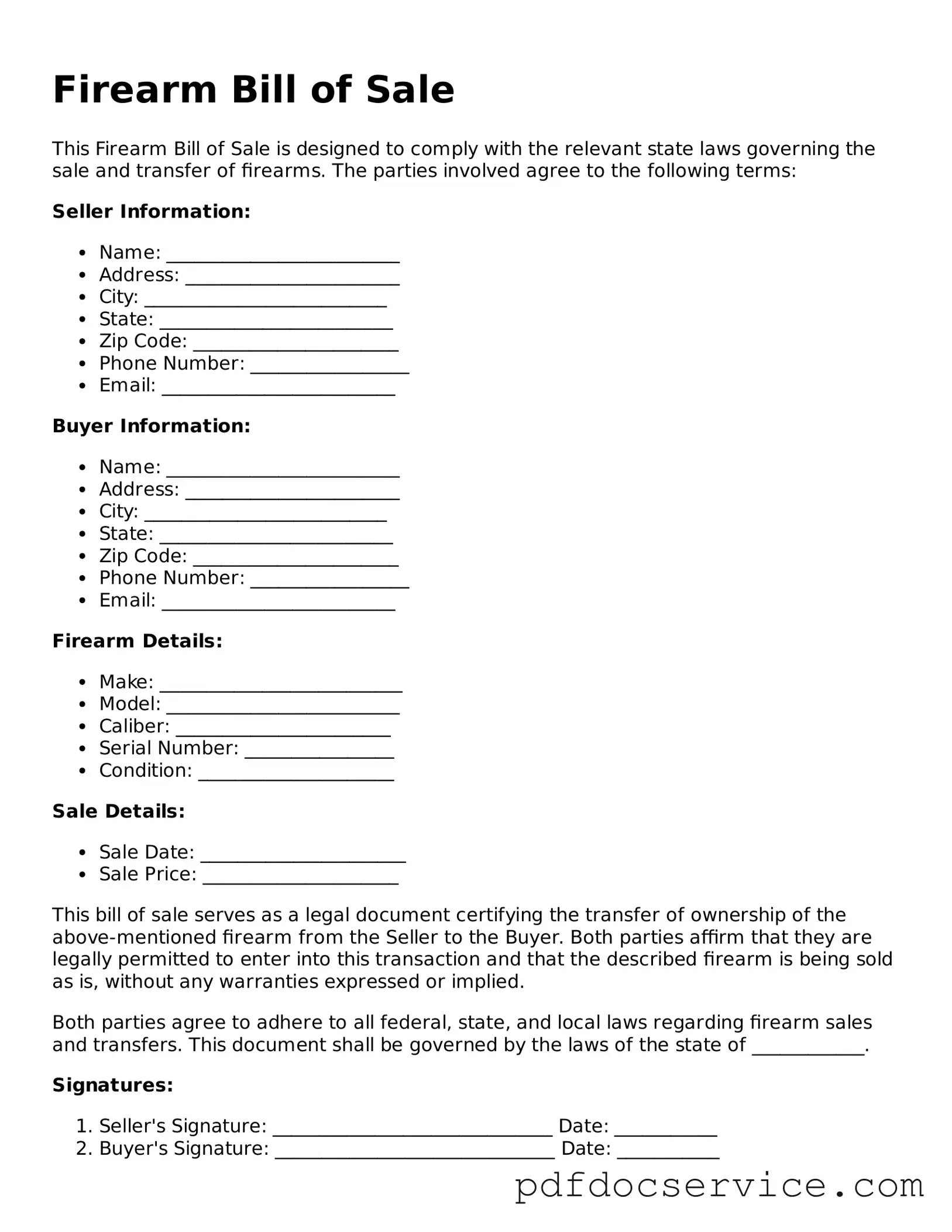Blank Firearm Bill of Sale Form
The Firearm Bill of Sale form is a legal document that records the transfer of ownership of a firearm from one party to another. This form serves as proof of the transaction and includes essential details about the firearm, the buyer, and the seller. Understanding its importance can help ensure compliance with applicable laws and protect the rights of both parties involved.
Open Firearm Bill of Sale Editor
